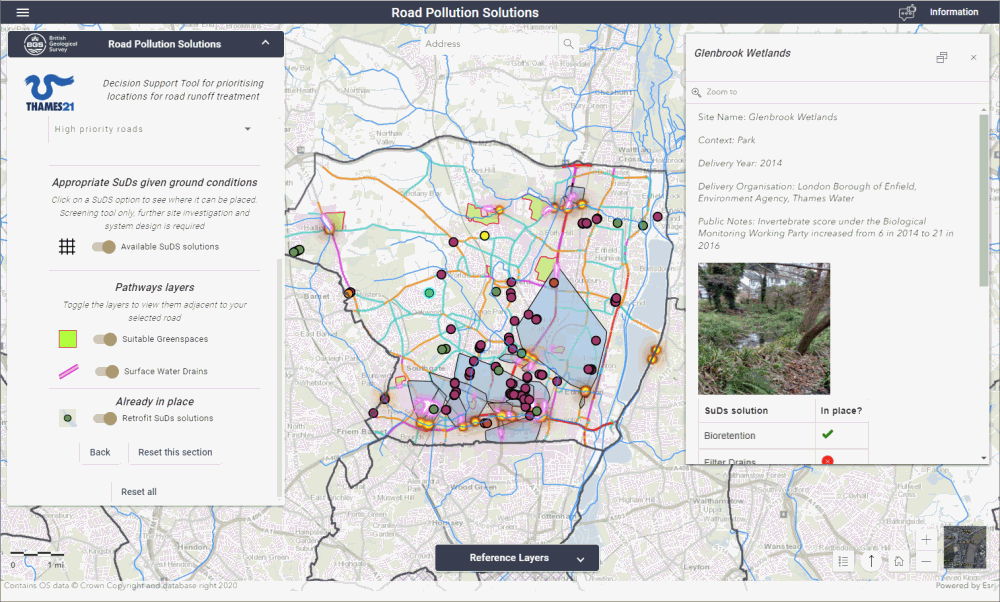
Road Pollution Solutions Tool
The Road Pollution Solutions Tool helps identify the sections of roads that are likely to contribute the most pollution to our rivers and to explore where sustainable drainage scheme could be placed to reduce this.
Thames21 and BGS
Author
camellia@bgs.ac.uk
Email
Project website
https://mapapps.bgs.ac.uk/road-pollution-solutions/ ❐
Details
The Road Pollution Solutions Tool was created to help to identify the sections of London’s roads that are likely to contribute the most pollution to our rivers. The Road Pollution Solutions Tool is limited to outer London, because in outer London there is a separate surface water system. The methodology underpinning the tool was developed by Middlesex University and has been adopted to determine the spatial quantification of road runoff pollution across Greater London. The methodology quantifies the mass of selected pollutants deposited on road surfaces, which can potentially enter rivers through road stormwater runoff; not taking into account the size of the waterway it is entering, and the dilution that might be applied.
The addition of the Road Pollution Solutions Tool into the Maidenhead, Teddington and Surrey Catchment acts as an extension of the original work carried out in the Greater London area.

Key water quality improvement interventions that have been incorporated into this model include Sustainable Urban Drainage options and constructed wetlands. The use of these nature-based solutions will allow road runoff pollutants to be captured, therefore reducing the concentration entering our rivers. However, it should be noted that there are other options out there, and these nature-based solutions cannot provide pollution control at the source. To our knowledge, this report and associated work, is the first attempt at this scale to identify which roads and drainage networks are polluting our rivers and develop evidence-based strategies for resolution using nature-based solutions. There is considerable opportunity to expand and refine this work.